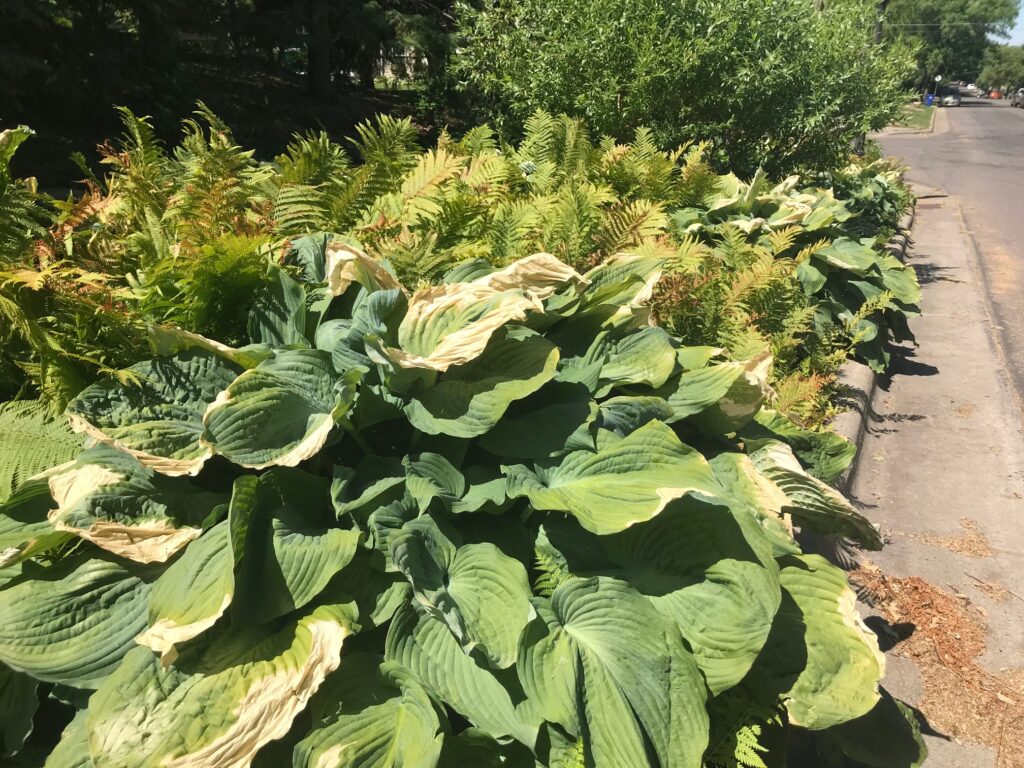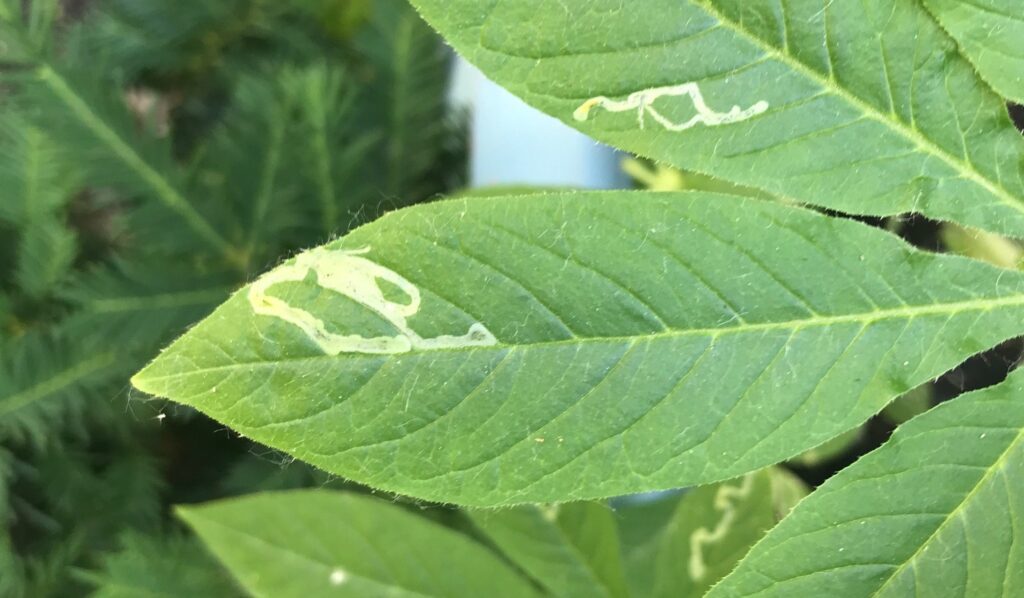What to Do About Scorched Plants
Like many gardeners in Minnesota, I’ve been discovering crispy, browning leaves on my plants-the new hydrangeas I’m testing, winterberries that have been in the ground for years, green beans. Are these scorched plants due to the heatwave we’ve had in June? Or are they symptoms of disease? And, what should a gardener do about them?
What Do Scorched Plants Look Like?
Plants that have had too much sun suffer from leaf scorch, a condition where the plant can’t keep up with its hydration needs and the outer leaves dry out and are burned by the sun. Leaf scorch can also be caused by bacterial infections or by nutrient deficiencies.
Signs of scorched plants include leaf edges that are white or brown and crispy such as those on the hostas below. Other signs of plant stress, such as wilting or leaf curling on tomatoes, may also be present.

You can prevent or reduce the effects of scorched plants through a variety of watering strategies, including watering deeply, watering early in the day if possible, and watering at the plant base rather than on the leaves. Shade clothes and other protective measures to keep sensitive plants out of the sun may also help. If plants are in containers, you can also move them to shadier spots in your garden during hot spells. Check how warm your containers are-you don’t want the roots to fry.
Once the damage has happened, it’s OK to remove the affected leaves, which should mostly be on the outside of the plant. Or, you can let them fall off naturally (they may be protecting leaves on the inside of the plant!) Make sure you are not watering too much or too little-do the finger test. If the soil around the plant is relatively cool and moist at root level, no water is necessary. Over-watering can also prevent a plant from moving water into its leaves. If the plant is in the ground, consider adding a mulch layer to retain moisture and keep roots cool. Finally, do not fertilize or otherwise stress the plant.
While we still have a bit of warm weather ahead and Minnesota really could use some rain, temperatures are expected to moderate in the next 10 days or so.
What If It’s Not Leaf Scorch?
Not all leaf problems can be blamed on the heat at this time of year. For instance, the leaves below have leaf miners-a group of insects that burrow through leaves in the larval stage. I just ignore this and expect that the larva will soon be beneficial insects in the garden. It’s unsightly but not a big problem.

Other leaf problems may be powdery mildew or various blights. If you are not sure what is going on with your plant, check out the University of Minnesota “What’s Wrong with My Plant” site. This will allow you to look for specific plants and problems. It’s filled with pictures, too, so you can make a clear identification of what’s going on.
-Mary Lahr Schier
For gardening tips and to receive Northern Gardener magazine in your mailbox, join the hort!

This early June heat wave may be a portent of life to come for us in Minnesota. Nine days in a row of over 90 in the Twin Cities in early June, including several over 95 – wow! We don’t get this much heat for this long in July or August. It was too much heat for too long and way too early. We’re not the Southwest but our Midwest climate is changing too, and is becoming less and less predictable. What can we do about it?
This happened to my fuchsia while I was up on the North Shore with my flowers in the care of a neighbor. The plant is recovering with a lot
of TLC. But I have another question – why are so many of us who plant green beans each year failed this year????
Thanks. This article gives me the information I needed to address my scorched Hasta issue.
My Lady Ferns look exactly like the ones in your photo. I made the mistake of planting them on full sun & well drained soil. Should have planted the Brown eyed Susan or Autumn Joy tall sedum there instead.. Lesson: Put the right plant in the right location.
(Edited for missing word in last line.)
I appreciate your comments………….first tme I have ever had sun Scorch on my Hosta….better now.
Question:
I got a plant from a lady who said it was Milkweed…………but think not. It has long wide leaves and now has a center
coming through that looks like a seed head??? a bloom?? I have seen these in pastures when living in the country.
It does reseed?? or spread as I already have two small plants… Plants are dark green, take quite a spread with the leaves…I do not
have a camera to send you a picture. Any help??
It’s hard to know without a photo. It sounds like common milkweed. This post has a photo of common milkweed. It does spread. https://mynortherngarden.com/2011/07/08/a-good-year-for-milkweed-and-monarchs/
I have a scorched plant problem and I’m not sure what to do about it!
Great tips on how to revive scorched plants! I’ll keep these in mind the next time my plants suffer from sun damage. Thanks for sharing!